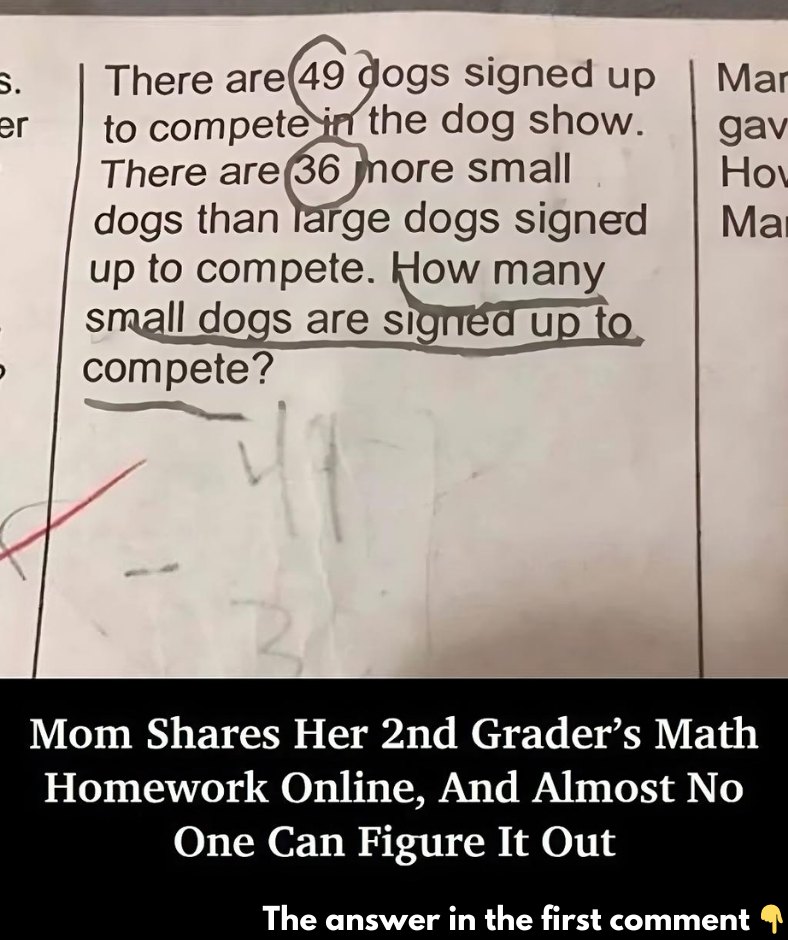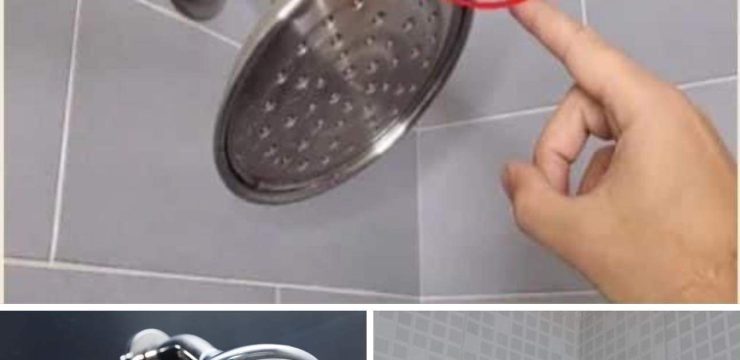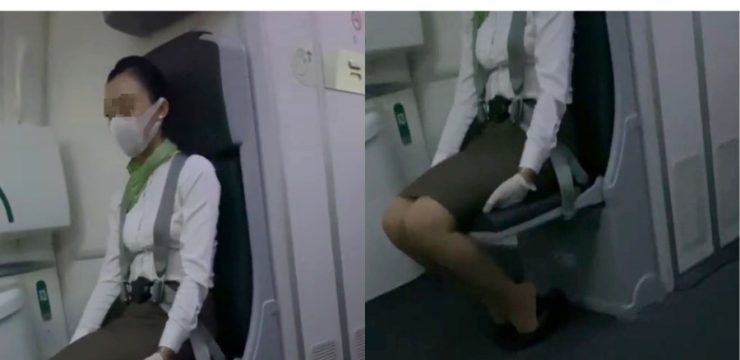Remember when homework felt like a rite of passage? That rush of excitement as you tackled each new assignment, believing it would prepare you for adulthood? Angie Warner found herself experiencing a touch of that nostalgia when she sat down with her second grader to go over a math problem. What started as a seemingly simple homework task quickly spiraled into a puzzling challenge that left even adults scratching their heads.
 Angie, like many parents, was helping her child with a math problem that looked straightforward at first glance. The question was about dogs competing in a show:
Angie, like many parents, was helping her child with a math problem that looked straightforward at first glance. The question was about dogs competing in a show:
“There are 49 dogs signed up to compete in the dog show. There are 36 more small dogs than large dogs signed up to compete. How many small dogs are signed up to compete?”
At first, Angie thought the answer was simple—36 small dogs. But as she thought more about it, the problem became confusing. Desperate for help, she turned to a private Facebook group, Breastfeeding Mama Talk Privately, where she posted the problem hoping for some guidance from the community.
A Math Problem That Baffled Everyone
Soon after Angie shared the problem, the post went viral, drawing attention from parents, teachers, and even math enthusiasts. Everyone was trying to figure it out, but no one could agree on the answer. What made it so perplexing wasn’t the arithmetic itself, but the logical thinking it required. The math seemed easy at first, but the way the numbers worked together demanded a deeper level of deduction.
Online debates about the problem continued for days, with people offering different solutions, each more complex than the last. Some felt that it was just a trick question designed to confuse, while others tried using various strategies to solve it. The more people thought about it, the harder it became to crack.
The Surprising Solution
After much speculation, the solution finally arrived, courtesy of the school district. It wasn’t a simple addition problem as many had assumed—it required an algebraic approach to figure out the exact number of small and large dogs. The final answer? 42.5 small dogs and 6.5 large dogs—a fractional result that surprised everyone. While it’s impossible to have half a dog in real life, the math solution revealed how many dogs, on average, fit the criteria of the problem.
Here’s the breakdown of the math:
- Let x represent the number of large dogs.
- Let y represent the number of small dogs.
We know two things from the problem:
- The total number of dogs is 49 (x + y = 49).
- There are 36 more small dogs than large dogs (y = x + 36).
Now, combine the two equations:
- 49 = x + (x + 36)
- 49 = 2x + 36
- Subtract 36 from both sides: 13 = 2x
- Divide by 2: x = 6.5
This means there are 6.5 large dogs. To find the number of small dogs, substitute x back into the equation:
- y = x + 36
- y = 6.5 + 36
- y = 42.5
So, the final result is 42.5 small dogs and 6.5 large dogs, a number that surprised many people since it involved fractional dogs, which doesn’t make sense in the real world but works mathematically.
Lessons Learned from a Second Grader’s Homework
Angie’s experience serves as a reminder that even the simplest-looking problems can have unexpected complexity. What appeared to be a basic homework assignment for a second grader turned into a viral math puzzle that stumped adults across the globe. This situation highlights the importance of critical thinking, persistence, and collaboration when faced with life’s challenges—whether it’s math homework or something else entirely.
This viral dog show dilemma also sparked a larger conversation about math education and how we approach problem-solving. It reminded people that math isn’t always about numbers on a page but about thinking outside the box and applying logic in creative ways.
Conclusion
What started as a second grader’s homework problem transformed into a viral sensation that captivated people worldwide. Angie Warner’s simple math question opened the door to deeper discussions about the role of math in education and how it challenges us to think critically. This seemingly small assignment serves as a reminder that sometimes, the most straightforward questions lead to the biggest surprises.





